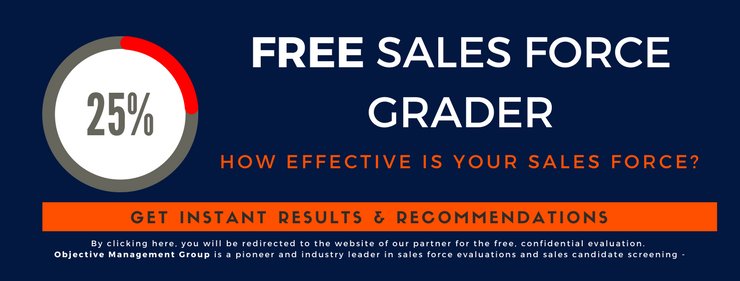 If you’re planning to sell your business, as its leader, you need a succession plan that will ensure its sustainability. You need to focus on maximizing the value of your business, years before you decide to sell by maximizing the return for the efforts you’ve invested over the years.
If you’re planning to sell your business, as its leader, you need a succession plan that will ensure its sustainability. You need to focus on maximizing the value of your business, years before you decide to sell by maximizing the return for the efforts you’ve invested over the years.
It is a no-brainer. You need to evaluate/adjust/confirm your business plan while anticipating what will be the business’s value 5 to 10 years from now. You need a plan that will, at the very least, double your EBITDA and ensure maximum returns. But how you achieve this is not trivial. On the contrary a real challenge.
Doubling the EBITDA Is Not a Trivial Objective; It Is a Real Challenge!
The conventional method is to go through a Strategic Planning Process that aims answers questions like where do you see your business 5 years from now?
But in today’s world, this approach no longer delivers! How can you answer that question in a world of constant changes when just keeping up with technological progress is a challenge?
Change Has Become a Way of Life Instead of Events That Occur from Time to Time!
How can you project yourself 5 years from now, when you don’t even know what the next 18 months will look like?
Hint: You need to change your perspective.
Instead of looking at your business from outside in to understand what has made you successful over the years, you have to start your analysis on the inside. In other words, how can you be profitable if you don’t understand your profit drivers? Those, are what made you who you are!
Once you have a deep understanding of the reasons for your profitability, you can extrapolate your goals.
Understanding the Profit Drivers That Made You What You Are Is a Pre-Requisite to Defining Your Goals!
Your business contains a treasure, and you probably don’t even know it!
It’s your big data – all is the data associated with the activities related to manufacturing and delivering products to your clients.
With the proper perspective, you can extract a lot of information that will guide your growth plan.
Your data includes information such as, how the market reacts to your products, or what is the best mix-product or mix-market to pursue. The unsuspected wealth of your corporate data can even identify what short-term strategy will boost your EBITDA.
Just with Excel’s capabilities, you can extract valuable strategic information. However, don’t get me wrong, you have to organize and characterize your corporate data to deliver actionable insights.
Let me explain what it means to organize your data: From your database, it is possible to cross sales data with operational data to aggregate each transaction with the actual effort that generated the sales dollars and the contribution dollars. However, each aggregated transaction information is raw without any details about the markets, the market segments, etc. Most of the time this information is not organized correctly in the company’s database and doesn’t allow proper trend analysis and conclusions.
Nevertheless, the state of your database does not prevent you from adding the proper characterization to each transaction to determine where your profit is coming from and what you can expect from each of your markets.
Here is a simple example that shows how you can extract trends from the corporate data and, most importantly, how you can identify a successful sales strategy:
The first chart shows how, for convenience market products distributed through wholesale distributors, the yearly dollar contributions and the percentage of contributions of the sales generated over the last 4 years.
The second chart shows how the sales volume in units evolves with the applied pricing strategy.
The volume of sales volume goes in the opposite direction of the % of contributions/Sales!
As you can see, this market segment is highly sensitive to the pricing strategy. Over the past 4 years, the percentage of contributions related to price has been reduced by 5% while we observed an increase in the volume sold. However, we can also see an increase in the yearly generated contribution dollars that proves the positive pricing strategy impact.
Now, imagine if you tag all your transactions according to your business’s markets and intermediaries. You would be in a position to identify which markets and intermediaries to target by measuring the real monetary impact on your profitability.
From there, you can build a stronger sales strategy which will lead to higher profitability and an increase in EBITDA. It’s then a matter of developing a short-term sales strategy that maximizes sales contributions by identifying with what market and intermediary you want to generate your profit.
With the Hidden Richness of Your Corporate Data, You Can Identify the Winning Strategies That Have a Significant Impact on Your Profitability.
Remember
Every year, the pace of change increases, and it is becoming tough for you to forecast where you will be in 5 years. Predicting the next 18 month is enough of a challenge. So how do you build a succession plan that will increase your EBITDA?
Your corporate data contains an unsuspected wealth of information with which you can build a winning strategy that will increase the profitability of your business. By appropriately characterizing your sales data from the last 5 years, you can quantify the monetary impact of market trends and intermediaries to choose the ones that will enable you to increase your EBITDA quickly.
After that, it is possible to extrapolate those trends and proceed with a market watch process that will allow you to build a yearly scalable sale strategy (market/intermediary).







